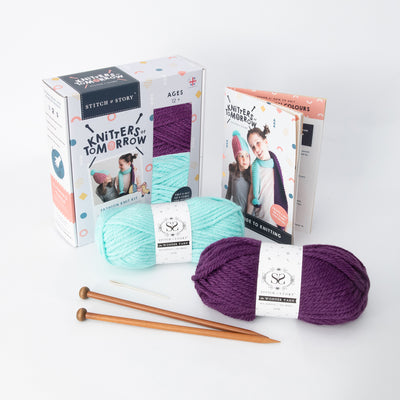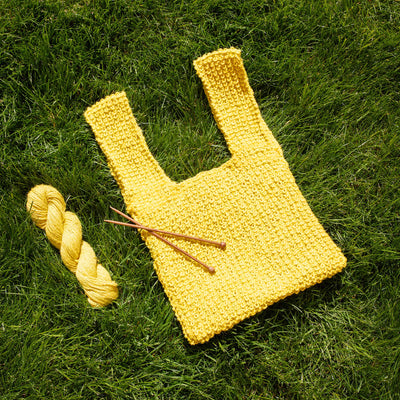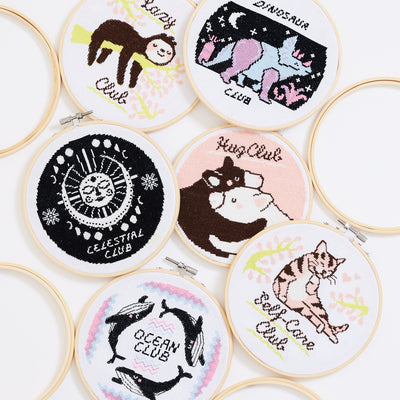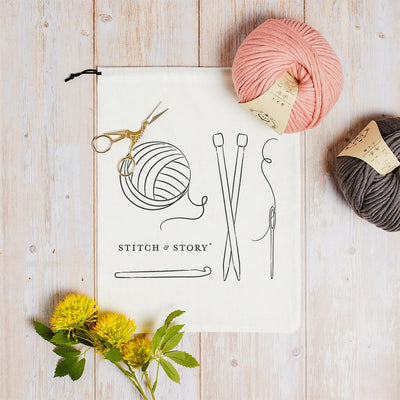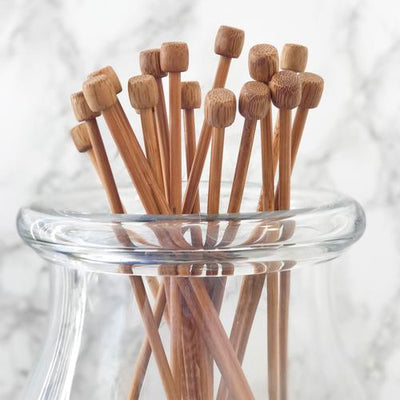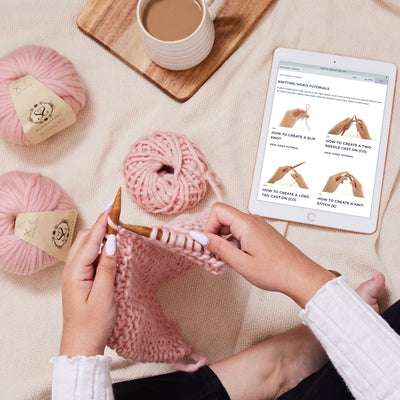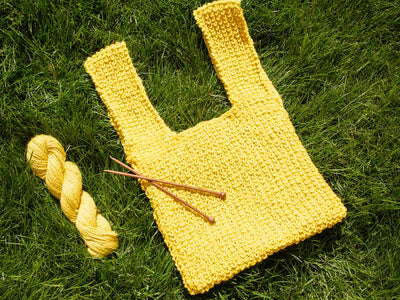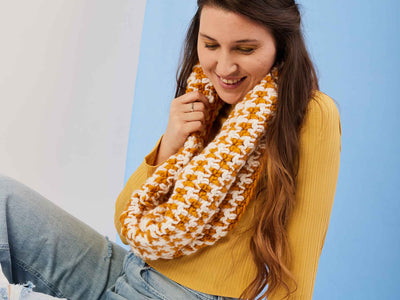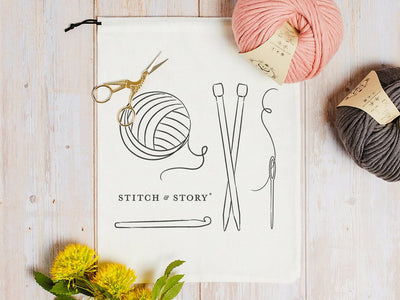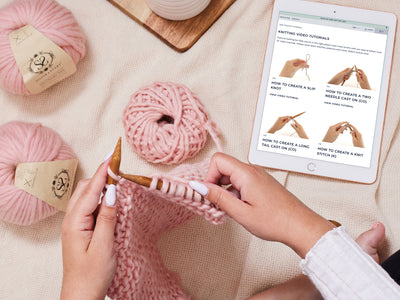
4 Ways To Adjust A Pattern Using Yarn With Different Lot Numbers
5 min read time
Hello crafters,
Have you ever purchased the same colour of yarn to finish a project, only to discover it’s a different shade to the yarn you already have? Did the manufacturer change the colour since you last bought the yarn? No, but you will have purchased yarn with a different dye lot number and the resulting difference in colour is all part of the dyeing process. As frustrating as this is, it’s an unavoidable part of yarn manufacturing but there are things you can do to avoid it negatively impacting your knitting or crochet endeavours.
BEGINNER’S GUIDE - HOW TO MAKE DYE LOT NUMBERS WORK FOR YOUR KNITTING AND CROCHET
If you look at the ball band or label of any yarn you will see that it has a shade/colour number and a lot number. You purchased the colour Dust Pink - which doesn’t appear anywhere on your ball band - so what do these numbers mean and why are they important?
Shade number
A shade number is the numerical equivalent of a yarn’s colour name. Stitch & Story’s The Chunky Wool in Mustard Yellow’s shade number is 18, while The Lil’ Merino in Graphite Blue’s shade number is 504. Every yarn colour is the result of careful measuring and mixing of pigment until the desired shade is achieved. This colour “recipe” is then assigned a unique shade number and every batch of yarn dyed in this colour will have the number stamped on its label. The colour of some yarns can look very similar under certain light sources, especially if they’re from the same colour family, so the shade number is required to differentiate between them post production.
Lot number
A lot number relates to the yarn dying process. It is a unique identification number assigned to a batch of dyed yarn during manufacturing and stamped on a yarn’s label. Every batch (or lot) of yarn dyed at the same time in the same vat receives the exact same lot number.
The importance of lot numbers
The method of dyeing, which can be affected by multiple factors such as slight differences in temperature or water composition, means yarn dyed in different lots can result in different shades of the one colour despite an otherwise identical production process.
Natural fibres, like Stitch & Story’s merino wool yarns, have inherent differences because of the variation in wool produced from one animal to the next. Multiple variables, like genetics and weather, can impact the wool, which in turn reacts differently to the dye.
This means it is almost impossible to produce an exact colour match between yarns dyed in different dye lots and more often than not there will be a slight variation in colour.
How lot numbers affect knitting and crochet
While slight differences in the yarn shade may be so subtle they’re undetectable in ball or skein form, the variation can become more apparent during knitting or crocheting, under different light sources, or after washing. By using yarn from different dye lots the appearance of your finished handmade textiles can be spoiled. Unmatched dye lots are particularly frustrating for crafters because issues usually only arise after hours of labour and often at a period of time significantly after the yarn would have originally been dyed, meaning supplier’s stock is likely to be depleted.
How to lessen the impact of different dye lot numbers
Firstly, you should always hold onto your yarn ball band or label, at least until your project is finished. This way, if for any reason you run out of yarn before completing, you know exactly what shade number and lot number you need to purchase to finish. Some crafters keep notebooks with the brand name, yarn type, shade number, lot number and date of all completed projects listed, should they ever want to revisit them or buy the same colour or type of yarn again.
Always buy enough wool for your planned project. It is better to err on the side of caution and buy a little more than you may need in case you decide to enlarge your item, customise it, or add tassels or pompoms. If you are making something in a single colour you definitely want to make sure you are purchasing yarn from the same dye lot to avoid seeing any colour distinction where you join a new ball of yarn.
Once a batch of yarn with the same lot number is finished, it is no longer available. The next batch of yarn in the same shade will have a new lot number and possibly look or feel slightly different.
When you can’t get more of the same dye lot number
Sometimes it may be impossible to get hold of additional yarn with the same lot number. So what do you do when you have run out of yarn part way through a project or you don’t have enough yarn of the same colour in your stash for a project you’d like to start and use it for?
1. Finish early
Can the project you’re working on be modified to use less yarn? If it’s a jumper or cardigan you may be able to turn it into a cropped style or shorten just the front panel to make it asymmetric or shorten the sleeves. A blanket can be finished early (it will just be a little smaller) and a scarf that’s a bit shorter than the pattern states will still work as a scarf. Sometimes it’s just a matter of being creative and making the pattern work for you.
2. Colour blocking
Can the different dye lots be assigned to specific parts of the item? The cuffs and collars or sleeves of a jumper or cardigan could be knit or crocheted in one dye lot and the body in another; or you could split the project in half with the top part in one dye lot and the bottom in another; or do the back of your item in the odd dye lot. This would also work for other items such as hats, gloves and scarves. In blankets or cushion covers a border in the odd dye lot, or creating a stripe pattern alternating between dye lots, can be quite effective.
If you want to minimise the impact of mismatched dye lot colours you can use the yarn from both dye lots at the same time by swapping yarn every few rows. By limiting the colour changes to smaller sections across the entire item, your eyes will blend the shades together making it more difficult to notice any distinct changes in colour.
3. Contrast colours
Can the different dye lots be separated by a contrasting colour? It is only when the same colour yarn from different dye lots is knit or crocheted right alongside itself that the difference in colour is really noticeable. If your pattern could be broken up with a contrasting colour that would keep the odd dye lots separate then the change in shade is less likely to be perceptible.
4. Change stitch pattern
Can the stitch pattern be modified? Working the different dye lot in a different stitch pattern can make the change in colour less obvious as the eye will acknowledge a contrast in stitch and texture and focus less on the colour.
Hopefully, now you know the significance of dye lot numbers you won’t find yourself in the situation of having to match yarn, as you’ll have enough for your project from the start. If you do find yourself caught out though, knowing the lot number you require will make it easier to find a colour match or you may find one of the four alternative solutions above is just perfect for you and your project. Either way, there is no need to worry when you discover you’ve run out of yarn - there is always a solution to every knitting or crochet problem.
Happy crafting!
